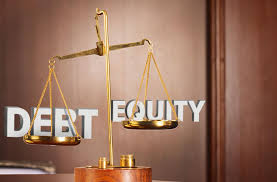The field of finance is rapidly evolving, and the next big thing is embedded finance. If you haven’t heard of it before, embedded finance refers to the practice of incorporating financial instruments into mundane contexts. The distribution of financial services is being disrupted by embedded finance. Using integrated finance, businesses can better serve their customers while also improving profits. Read further to see the differences between embedded finance vs banking as a service. We also compiled a list of some embedded finance companies you need to know. Why not dive in now?
What is Embedded Finance?
The term “embedded finance” refers to the practice of incorporating financial services into commercially available goods and technologies. In other words, it’s all about giving people easier access to and use of financial services. Payments within an app, P2P lending, and microinsurance are all examples of this type of service.
Millions of individuals throughout the world could benefit from embedded finance since it will make financial products and services more accessible and convenient for them. The main advantage of embedded finance is that it increases customer access to financial services. Also, customers won’t have to go looking for additional service providers if they can get what they need from the products they already buy.
This not only encourages their usage of these services by making it more convenient for them to do so but also increases the likelihood that they will. Therefore, embedded finance may significantly expand access to banking services.
What is Embedded Payment?
Payments were traditionally made by taking out a credit or debit card from a wallet and swiping it through a reader or inserting it into a slot. Similar to how technology has progressed, so has our means of making monetary transactions. Embedded payments are one of the newest developments in the field of payment processing.
Electronic payments that are embedded in a retailer’s app are called embedded payments. Customers can complete their purchases without ever leaving the retailer’s site or app when using this payment method. Also, customers don’t even have to leave the merchant’s site to enter their payment information and finish the purchase.
This method of payment benefits store owners and customers alike by facilitating a more streamlined transaction process. Furthermore, since embedded payments are not handled by a third-party processor, they are typically safer than standard Internet payments. For this reason, they add an extra safeguard for both business owners and customers.
Embedded Finance — How It Works?
Embedded finance services make it possible for any company to oversee and promote cutting-edge monetary offerings. Innovative payment, debit, credit, insurance, and investment services from financial institutions can now be easily included in the services of any firm. The last decade has seen an uptick in payment processing firms, opening up new doors for online enterprises.
Adding in things like debit cards, credit cards, insurance, and investments only adds layers of complexity to the payment process. However, as a marketer or a brand in any industry, you want your products or services to look as appealing as possible to potential buyers. There are many disagreements involving the client, the bank, and the seller because of the necessity of customers interacting with their banks in order to obtain debit and credit cards, couches, cars, and home loans. As opposed to reselling financial services, embedded finance offers digital brands and retailers the chance to generate additional revenue at low incremental costs. It also helps businesses connect with new customers, which in turn increases consumer loyalty and the likelihood of more online purchases.
It has the potential to increase software businesses’ income per user by a factor of two to five. Shopify, a business-to-business e-commerce platform, generates over $500 million in annual revenue from its sellers’ financial operations, and this number is rising at a rate of over 50% annually. Due to Shopify’s extensive user data, the company can significantly reduce the underwriting expense. Furthermore, financial services will become an increasingly lucrative add-on for many software and platform companies.
Types Of Embedded Finance
The following are the types of embedded finances you need to know:
#1. Embedded Payments
By incorporating payment infrastructure inside apps and platforms, embedded payments make purchasing quick and easy. When it comes to financial services, payments were the pioneer. However, customers today expect this functionality as standard in any modern e-Commerce app or SaaS platform and use it frequently.
In-game purchases in video games, automated payroll, electronic wallet connections in e-commerce apps, payments through educational enterprise resource planning systems, subscription-based payments in software as a service, and many more use cases are all possible with embedded payments.
Embedded payments allow customers to pay straight from their bank accounts while saving businesses money on transaction costs by connecting financial accounts to mobile apps using application programming interfaces (APIs) for ACH transactions.
#2. Buy Now Pay Later (BNPL)
Customers can take advantage of the Buy Now Pay Later (BNPL) payment plan and spread out the cost of their purchases over time with zero or low-interest payments. Third-party companies often offer BNPL in conjunction with brick-and-mortar stores and online marketplaces.
Afterpay, Klarna, Affirm, and PayPal Credit are just a few of the many BNPL options available to consumers. However, these organizations collaborate with stores big and small to implement BNPL as a viable payment method for customers. To use BNPL, customers must first make an initial payment, and then make additional payments over the course of several weeks or months until the full purchase price is paid.
There are many advantages that BNPL can provide for business owners. Firstly, it can boost revenue by making shopping less of a hassle and more inexpensive for consumers. Secondly, it can assist bring in new business from young people who are more open to nontraditional payment methods. As a third benefit, BNPL firms often handle financing and risk assessment, which lessens the load on the retailer’s finance department and can lead to more customer acquisition.
#3. Embedded Cards
A credit or debit card that may be used online or in a mobile app is an embedded card. This card can be used for both online and in-store transactions. Due to their many advantages over conventional credit and debit cards, embedded cards are quickly gaining in popularity. For instance, integrated cards allow for immediate peer-to-peer payments, and you may use them to make payments in multiple currencies with no additional fees.
Embedded cards are more secure than conventional ones since they are resistant to the same forms of fraud. Also, embedded cards can monitor financial outlays and provide real-time access to budget data. Plaid, Stripe, and Square are three of the most well-known integrated card suppliers.
#4. Embedded Investments
Many people who want to invest might not know how to identify secure options. However, doing so is a crucial aspect of sound financial management. Therefore, it makes sense to make integrated investments because doing so simplifies the investment process by consolidating it into a single location. It’s a safeguard that lets users buy stocks, bonds, and other financial instruments without ever leaving the site.
#5. Embedded Insurance
One form of insurance known as “Embedded Insurance” is sold alongside products and services that don’t traditionally require insurance. This implies that when you buy a good or service like a car, phone, or vacation package, you also get insurance coverage at no extra cost.
Embedded insurance is widely used in many sectors. One common example is the option to bundle auto insurance with a vehicle purchase. This is a type of insurance that is built right in. In a similar vein, while purchasing a vacation package, you may be given the opportunity to also purchase travel insurance.
It offers a second revenue stream, which can be a sizable source of money for enterprises. Secondly, it can boost customer retention rates since customers like the ease with which insurance is bundled into their purchases. Thirdly, firms can set themselves apart from rivals who don’t provide Embedded Insurance by doing it themselves.
#6. Embedded Credit
The term “embedded credit” refers to the practice of incorporating credit products into non-financial digital platforms. Therefore, the platform facilitates the application, approval, and repayment of loans for its users. A customer shopping on Amazon for a piece of kitchen equipment, for instance, has the option of converting their purchase to an EMI without ever leaving the site.
Customers also have the option of using mobile apps to apply for loans and make payments. Younger generations like those born between 1980 and 2000 find this form of funding appealing because it is simple to understand and utilize.
#7. Embedded Lending
Consumers can take their time applying for loans at banks. Credit at the point of sale is now offered by a wide variety of non-traditional institutions. Without them, lengthy processes and mountains of documentation would be unnecessary.
Also, embedded lending takes the shape of services like Instant Settlements for Marketplace Sellers, where merchants may get loans based on their marketplace sales data received in real-time via secure APIs.
Embedded Finance Companies
The following are some of the embedded finance companies you should know:
#1. Stripe
With Stripe, companies can integrate banking, payment, and lending services directly into their platform. In addition to offering eligible consumers simple access to funding to help them expand their businesses, companies can integrate payments into their platform for a smooth user experience, from onboarding to payment acceptance and payouts. It is one of the best embedded finance companies you can choose from.
#2. Balance
Online stores and marketplaces can make use of the B2B payment processing services offered by Balance. The hosted checkout service is currently available to both businesses and consumers. They support a wide variety of payment options such as e-check, credit card, net-30, automated payment, and financing. Invoices and payments may be tracked and settled quickly and easily thanks to automatic reconciliation.
#3. Resolve
With Resolve, B2B manufacturers and distributors can accept 30, 60, or 90-day payment terms from their corporate clients. Their offering is an all-in-one answer for managing credit and implementing net terms. An encrypted ‘silent’ credit check is used to quickly determine a client’s creditworthiness. It is one of the best available embedded finance companies.
#4. Plaid
This is the most convenient method for customers to link their financial information to a mobile app. Plaid equips programmers with the resources they require to design user-friendly interfaces. Millions of consumers are using Plaid to link their accounts with their favorite apps. With just a few lines of code, Plaid can be up and running in a matter of minutes. You can incorporate their front-end module into your project with no effort. The goal of the design was to increase sales. Plaid is a platform that facilitates the integration of financial apps and services. You can use this to set up a budget, start a retirement fund, or move money around. You have probably already used Plaid. Over 25% of the U.S. adults with bank accounts utilize Plaid.
#5. Alviere Hive
You can include banking services in your company with the help of their platform. Finance Proposal Customer-focused, FDIC-insured banking services in a unified platform. Money transfers are simple with the use of ACH transactions, credit card processing, and simple implementation. Cards with Logo Promotional cards, either with your logo on them or without. International Funds Transfer Transfer funds internationally in any currency. There is only one available embedding offer. Banking, bill paying, money transfers, and electronic deposits are just some of the FDIC-insured services available to customers.
#6. Genius Avenue
Insurance companies can rely on Genius Avenue for cutting-edge platform solutions and bespoke capabilities that strengthen customer relationships and boost profits. The Insurance Companies Work beyond the software with a group of insurance experts. Optional Perks Completely modifiable features that cut down on overhead and boost revenue. Brokers Gain access to payroll advantages and simplify enrollment and management. It is one of the best available embedded finance companies. Carriers of Captives get rid of antiquated processes and boost enrolment.
Embedded Finance vs Banking as a Service
The concepts of embedded finance vs Banking as a Service share many commonalities. The provision of financial options by sources other than traditional banking systems is a key similarity between embedded finance vs Banking as a Service. However, there are also critical contrasts that help clarify their various functions within the fintech industry. Some key distinctions between embedded finance vs Banking as a Service are as follows:
#1. The Age-Old Chicken-Or-Egg Debate
It may be argued that Banking as a Service is what enables embedded finance to exist. To provide an integrated financing alternative to customers of other products or services, embedded finance adopts the end-to-end model of BaaS. BaaS is essential to the functioning of embedded financial systems.
#2. Commerce with the Public
Embedded finance is defined as the provision of financial solutions by consumer-facing firms in connection with the acquisition of primary goods and services. The idea is to make it so that consumers don’t have to look elsewhere for services like loans and insurance. This improves the user experience and encourages additional purchases by streamlining the buying process. Without the need for customers to actually buy anything, BaaS allows non-banks and digital banks to offer their customers a range of financial services.
#3. Front-End versus Back-End
To a greater extent than BaaS is defined by its front-end banking capability, embedded finance is defined by its back-end access to financial services. The former is concerned with facilitating easy access to solutions, while the latter is concerned with the underlying infrastructure used by digital banks and non-banks to provide monetary transactions.
#4. Branding
Most consumers are aware that an outside financial institution is behind embedded finance’s integrated financing options. When making a purchase on Amazon, for example, customers are made aware that the “buy now, pay later” payment alternatives are provided by Affirm. Banking as a Service often involves the banking system backing up the front-end provider with whom the customer has direct contact.
#5. Conversions
BaaS is a platform for delivering online banking services in line with what modern consumers want from their money management tools. It takes a broader, more comprehensive perspective. There is a greater emphasis on the role that embedded finance plays in individual purchasing processes and transactions. It encourages sales by letting the service provider maintain contact with the customer all the way up until the purchase is finalized.
Benefits Of Embedded Finance
The following are the benefits of embedded finance:
#1. Getting Additional Sources Of Income
You can expand the ways in which you collect money from customers by including in-built financing as one of several payment methods. Hydrogen’s built-in banking system, for instance, can earn up to one percent each time a user makes an online purchase using a debit card.
#2. Boosting Your Product’s Market Share
Clients will have a better time using your product because of the embedded finance features. An intuitive, user-friendly interface is key to achieving this goal. In turn, this will increase the desirability of your service and the likelihood that clients would use it in the future.
#3. Raising The Number Of Conversions
If customers have no trouble figuring out how to buy something on your site or app, you should expect a higher conversion rate.
#4. Collecting More Information from Customers
The user’s information (phone number, email address, payment details, etc.) is shared in order to complete the purchase. The more you know about the customer, the more you can tailor your service to them.
What Are the Opportunities for Embedded Finance?
- Increased access to financial services
- Improved financial inclusion
- Greater financial literacy
- Lower costs
- Increased efficiency
Is Embedded Finance a Fintech?
While embedded finance focuses on incorporating traditional financial services into the purchasing experiences of non-financial services organizations, embedded fintech allows customers to seamlessly operate inside the platforms they are already familiar with.
Who Are the Key Players in Embedded Finance?
The three main keys in the embedded finance value chain are online markets and platforms, infrastructure suppliers, and banks and other financial institutions.
Is Embedded Finance the Future?
The future of the financial services industry is unquestionably Embedded Finance. Its accessibility and ease of usage are unrivaled because of its incorporation into non-financial channels.
How Big Is the Embedded Finance Industry?
The global Embedded Finance market was worth USD 1645.64 mn in 2021 and is projected to grow to USD 21702.96 mn by 2027, a CAGR of 53.71 %.
What Are Embedded Finance Products?
A non-financial company’s provision of financial products and services via application programming interfaces and platforms is an example of embedded finance. Embedded finance facilitates the use of external financial services by businesses.
Is PayPal an embedded finance?
Apple Pay and Google Pay are two more major players in embedded finance. Payment gateways like PayPal, Square, and Stripe can also be integrated. All of these enterprises depend critically on embedded financing.
Final Thoughts
With embedded finance, monetary offerings are built into regular consumer goods and services. Embedded finance facilitates the spread of innovative payment and lending methods like mobile wallets and P2P lending. Since embedded finance makes financial services more accessible and easier to use for both people and businesses, it has the potential to radically disrupt conventional banking. There will be great advancements in the field of financial technology thanks to embedded finance.
Related Articles
- BUY NOW PAY LATER COMPANIES 2023 & All You Need.
- BUY NOW PAY LATER PLATFORMS: Top Best BNPL Apps of 2023
- Content Marketing: Best Easy Guide (+Free Course)
- NYC SMALL BUSINESS GRANTS: 15 Most Choicest Options Available
- EMBEDDING VIDEO: Meaning, Powerpoint, WordPress & HTML






